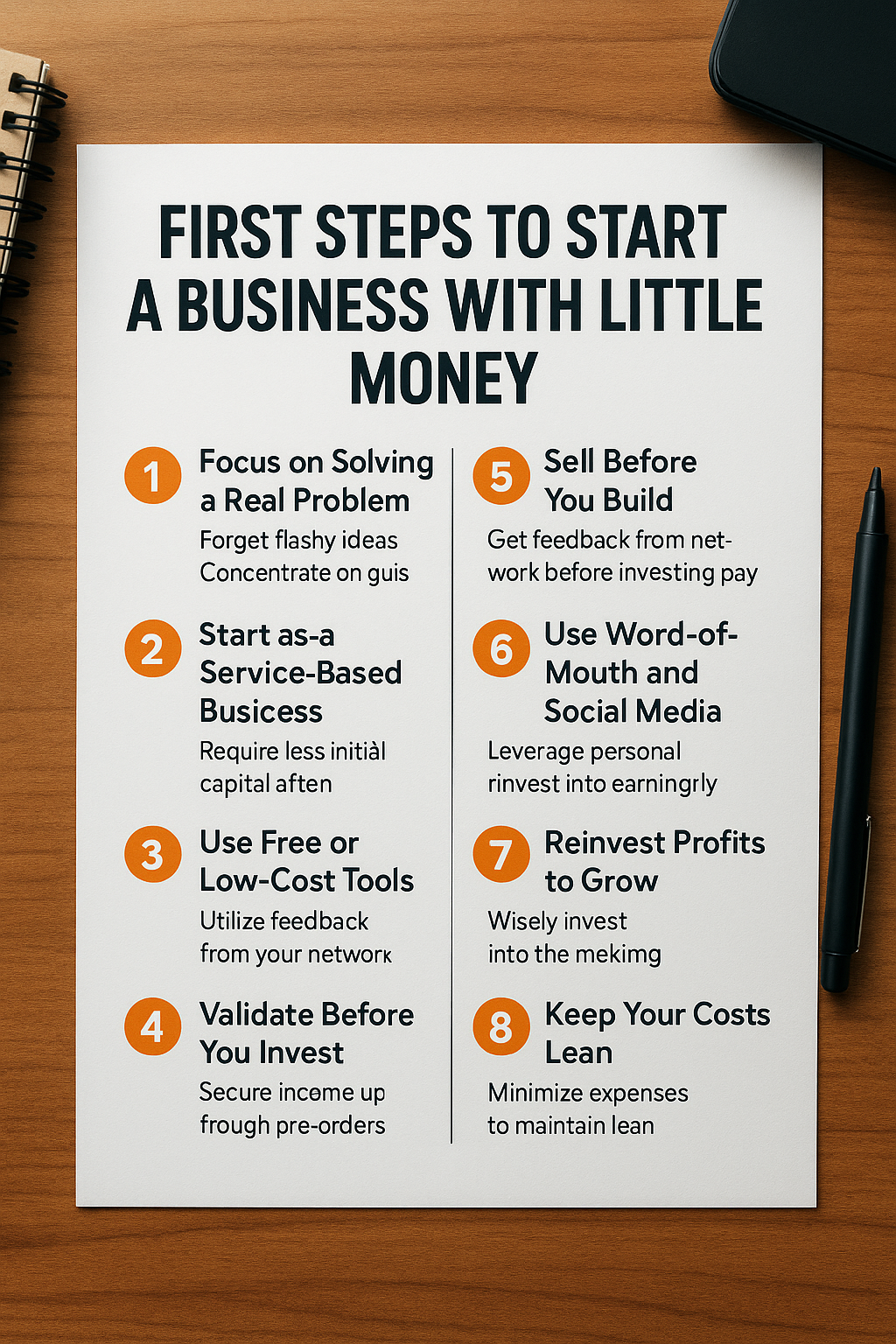One of the biggest myths in entrepreneurship is that you need a lot of money to start. In reality, many successful businesses began with limited funds, creativity, and a strong work ethic. If you have a business idea but a tight budget, don’t worry — this guide will show you how to get started smart, lean, and confident.
Why Starting Small Can Be a Big Advantage
Starting with little money:
- Forces you to be creative and resourceful
- Helps you test and validate ideas before investing more
- Reduces risk
- Makes your business more agile
Many entrepreneurs who start small end up building stronger, more sustainable businesses.
Step 1: Focus on Solving a Real Problem
Forget about flashy ideas. Focus on solving a real problem for a specific group of people.
Ask yourself:
- What do people struggle with in everyday life?
- What skills or knowledge do I have that can help?
- Can I provide a simpler, faster, or cheaper solution?
When you solve a real problem, people are more likely to pay — even before you have a perfect product.
Step 2: Start as a Service-Based Business
Product-based businesses often require more money upfront (inventory, shipping, packaging). Service-based businesses are easier to launch on a budget.
Examples:
- Freelance writing or graphic design
- Social media management
- Online tutoring
- Virtual assistant services
- Fitness coaching
- Web development
All you need is your skill, a way to communicate your offer (website or social media), and a way to get paid.
Step 3: Use Free or Low-Cost Tools
There are thousands of tools that help you launch a business without spending much. Start with:
- Canva – for design
- Google Workspace – for email, documents, spreadsheets
- WhatsApp Business – for communicating with clients
- Instagram/Facebook – to build a free online presence
- Linktree – to organize links in your bio
- Trello/Notion – for planning and organization
Use only what you need — avoid tool overload.
Step 4: Validate Before You Invest
Before spending money on a website, logo, or ads — test your idea first.
- Offer it to 5–10 people in your network
- Ask for honest feedback
- See if they’d be willing to pay
- Adjust your offer based on their input
Once people start saying “yes,” you’ll have the confidence to invest more.
Step 5: Sell Before You Build
This sounds backward, but it’s one of the smartest things you can do with no money. Don’t wait to create the perfect product or service.
Instead:
- Offer a pre-order or pre-launch discount
- Run a pilot program or beta test
- Offer your service in exchange for testimonials
This brings in your first revenue and gives you motivation to keep going.
Step 6: Use Word-of-Mouth and Social Media
You don’t need ads to get customers. Use your personal network and social platforms.
Tips:
- Share your story and what you’re offering
- Ask happy clients for referrals
- Post helpful content related to your niche
- Engage with others in your community
People are more likely to support someone they know and trust.
Step 7: Reinvest Profits to Grow
When money starts coming in, don’t spend it right away. Reinvest it wisely:
- Improve your branding or website
- Buy better tools or equipment
- Take a course to improve your skills
- Run small ads to reach more people
Grow your business slowly and intentionally.
Step 8: Keep Your Costs Lean
Avoid:
- Expensive office spaces (work from home if you can)
- Fancy business cards (use digital versions)
- Over-ordering inventory
- Hiring too early
Operate lean until you have steady revenue. Simplicity = sustainability.
Final Thoughts: You Don’t Need a Lot — You Need to Start
Lack of money isn’t the biggest barrier — fear and inaction are. If you’re willing to start small, work smart, and stay focused, you can build a business from almost nothing.
Start where you are. Use what you have. Do what you can.
Some of the world’s greatest entrepreneurs started with nothing but a laptop, an idea, and determination. You can too.
Vamos continuar com o próximo?
